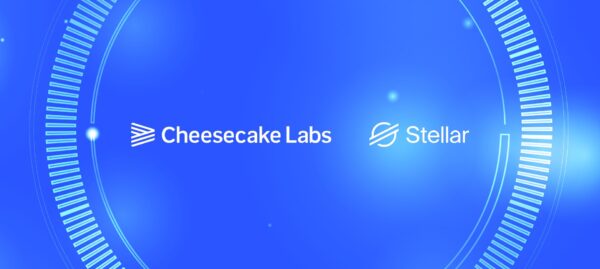What Are Stablecoins, and Why Should You Know About Them?
Gabriel Soares | Nov 26, 2025

After reading the Stellar Development Foundation’s (SDF) end-of-year recap article ‘The Story of 2022’, I was excited to dive deeper into the history and future of the Stellar network. The SDF outlined its priorities for the coming year, which include increasing network scalability and innovation, activating more network participation, and promoting diversity inclusion.
The Stellar network is a decentralized platform for storing and exchanging digital assets, and it has come a long way since its inception in 2014. In this post, we’ll explore the evolution of the Stellar network and what these priorities might mean for its future.
Founded in 2014 by Jed McCaleb, one of the co-founders of the Ripple protocol. The goal of the Stellar network was to create a decentralized platform for storing and exchanging digital assets, with a focus on making it easy for people to send and receive money across borders.
While Ripple was primarily focused on serving large financial institutions, the Stellar network was built on a different protocol, designed to be more decentralized, inclusive, and accessible to a wider range of users.
The Stellar network has undergone several major protocol improvements over the years. Protocol 11, released in 2019, changed the way fees work and the way network capacity is measured. This protocol update was designed to improve the efficiency and scalability of the network.
Then a little later, Protocol 12 ended inflation and introduced new options for path payment, allowing users to make payments using multiple assets in a single transaction, which can be more efficient and cost-effective than using multiple transactions.
Protocol 13, released in 2020, added three new features to the network: fee bumps, fine-grained control of asset authorization, and first-class multiplexed accounts. Fee bumps allow users to increase the fees on their transactions to ensure that they are processed more quickly.
Fine-grained control of asset authorization allows users to set specific permissions for their assets, such as who can hold or trade them. First-class multiplexed accounts allow users to have multiple signers for a single account, which can be useful for businesses and organizations that want to have multiple people involved in managing their assets.
Overall, these protocol improvements have evolved based on requirements of real-world use cases, and have helped to make the Stellar network more efficient, secure, and scalable, and they have contributed to its growing popularity and adoption. This adaptability has been a key factor in the success of the Stellar network and is likely to continue to be an important part of its future growth and development.
Over the years, the Stellar network has seen a lot of growth and development. One of the standout features of the Stellar network is its ability to issue and trade digital assets. The platform makes it easy for organizations and individuals to create and issue their own digital assets, which can represent a wide range of things, including currencies, securities, commodities, and more. The process of issuing an asset on the Stellar network is simple and straightforward, and it can be done in just a few steps.
Once an asset has been issued, it can be easily traded and exchanged on the Stellar network using the platform’s native features, such as the decentralized exchange (DEX) and automated market makers (AMMs). These operations allow users to buy and sell assets in a fast and efficient manner, with low fees and no need for a centralized exchange or broker. The flexibility and ease of use of the Stellar network’s asset issuance and trading features have made it a popular choice for a wide variety of organizations and individuals looking to create and trade digital assets.
So what does the future hold for the Stellar network? It’s hard to say for sure, but there are a few trends and developments that suggest where the platform might be headed.
One of the most exciting developments in the Stellar ecosystem in recent years has been the rapid growth in the number of anchors. An anchor is a financial institution or other entity that holds customer deposits and issues credits onto the Stellar network. These credits can be used to represent a variety of assets, including fiat currencies, commodities, and other digital assets. Anchors act as a bridge between the Stellar network and the traditional financial system, allowing users to move assets between the two.
This is covered in the article ‘The Role of Anchors In The Stellar Network’.
In 2022, we saw the number of anchors on the Stellar network more than double, from around 30 to over 60. This growth is a testament to the increasing demand for digital assets and the growing recognition of the Stellar network as a reliable and efficient platform for storing and exchanging them.
The addition of so many new anchors is a major boost for the Stellar network, as it helps to increase liquidity and stability, and it makes it easier for users to hold and trade a wide variety of assets. And as MoneyGram also became a Stellar anchor, offering cash in and cash out in more than X countries, it’s clear that Stellar is trusted by traditional financial institutions and is more than ever close to achieving financial inclusion worldwide.
The Stellar network is well-suited for the issuance and management of digital assets, including CBDCs. Its decentralized nature, fast transaction times, low fees, and support for a wide variety of assets make it an attractive platform for use in financial applications. As the interest in CBDCs continues to grow, it is likely that we will see more central banks exploring the use of the Stellar network and other blockchain platforms for the issuance and management of CBDCs.
Throughout the year we had great examples of central banks experimenting with digital assets in the Stellar network and the future looks promising in this space, it is likely that we will see more central banks turning to the platform as they look to modernize their payment systems and meet the changing needs of their citizens.
A similar trend has occurred around stablecoins as they’ve gained popularity as a digital asset class. A stablecoin is a type of cryptocurrency that is pegged to the value of a real-world asset, such as a fiat currency, commodity, or other assets. The goal of a stablecoin is to offer the benefits of cryptocurrency, such as fast, cheap, and secure transactions, while also maintaining a stable value that is not subject to the price fluctuations that are common in other cryptocurrencies.
Stablecoins have become popular as a means of storing value, making payments and transfers, and as a hedge against inflation. The growth in stablecoins has been fueled by the increasing demand for digital assets and the need for more stable and reliable alternatives to traditional cryptocurrencies. And USD stablecoins are already ~6% of USD Currency in circulation (143 billion out of 2.3 trillion).
Especially in markets like Latin America, we’ve seen some great projects being launched in 2022 like the MBRL, a stablecoin backed one-to-one by the Brazilian fiat currency, built through a partnership between Stellar and Mercado Bitcoin, the largest exchange of digital assets in Latin America.
Given the flexibility, decentralization, and continuous adoption of Stellar for digital assets issuance, we should expect Stellar to be explored as the go-to blockchain network for a larger number of banks and financial institutions in 2023.
Beyond digital assets and DeFi, we’ve seen blockchain technology being applied to a variety of use cases leveraging the impact and reach of those projects. A particular use case is the distribution of cash by humanitarian aid organizations which lead to the creation of Stellar Aid Assist.
The Stellar network is well-suited for relief aid projects due to its fast and efficient transaction times, low fees, and support for a wide variety of assets. In times of crisis, it is important to be able to get aid to those in need as quickly, transparently, and efficiently as possible, and the Stellar network allows for fast and cost-effective transactions that can help to make this possible.
Additionally, the Stellar network is a decentralized platform, which means that it is not subject to the same types of controls and restrictions as traditional financial systems, making it easier to get funds to where they are needed in a timely manner. Overall, the Stellar network is a valuable tool for providing relief aid in times of crisis, and it is likely that we will see more initiatives like these in the future.
One of the most exciting developments on the horizon for the Stellar network is the introduction of Soroban, a smart contract platform built from scratch and integrated with the Stellar network. Soroban is designed to allow developers to build and deploy smart contracts on the Stellar network, opening up a wide range of possibilities for automating complex processes and building new types of decentralized applications (dApps).
This includes things like decentralized exchanges, prediction markets, and more. Soroban is still in the early stages of development, but it has already generated a lot of excitement within the Stellar community, and it is expected to be a major catalyst for the growth and adoption of the Stellar network in the future.
Soroban is live on Futurenet, an incentivized testnet, and set to launch on Mainnet mid 2023. It will likely be a valuable addition to the Stellar platform, allowing developers to build a new generation of decentralized applications that take advantage of the power and security of the Stellar network.
The Stellar Development Foundation’s priorities for 2023 are a testament to the organization’s commitment to driving innovation and growth in the Stellar network. Increasing network scalability and network innovation are key priorities, as they will help the network to handle more transactions and support a wider range of use cases. Activating more network participation will help to bring more users and organizations onto the network, further increasing its reach and adoption. Promoting diversity and inclusion is also an important priority, as it will help to ensure that the Stellar network is accessible and inclusive to people of all backgrounds and communities.
These priorities are critical to the continued success and growth of the Stellar network, and they are promising signs for the future. By focusing on scalability, innovation, participation, and diversity, the Stellar Development Foundation is positioning the network for long-term growth and success. With such a strong focus on these key areas, it is clear that the Stellar network has a bright future ahead, and we are excited to see what the next few years have in store.
Based on the developments and trends that we saw in the Stellar network over the past year, it is clear that the platform is heading toward new and exciting use cases and adoption. From the growing interest in decentralized finance (DeFi) to the increasing popularity of non-fungible tokens (NFTs) and the rise of central bank digital currencies (CBDCs), there are many great opportunities on the horizon for the Stellar network. It is an exciting time to be involved in the Stellar ecosystem, and we can’t wait to see what the future holds for it.
Cheesecake Labs is a software development and design firm with a strong track record of delivering high-quality custom applications and software solutions. The company is the official integration partner for the Stellar Development Foundation (SDF), and it has worked closely with the SDF on a variety of projects related to the Stellar network.

With its expertise and experience in the Stellar network, Cheesecake Labs is well-equipped to help organizations and individuals build custom solutions on the Stellar platform. If you are interested in building a solution on the Stellar network and would like to learn more about what Cheesecake Labs can do for you, reach out to the experts at Cheesecake Labs today.

With several years of experience in customer services, my background goes through several areas of technical support, from incident handling and real-time support to on-site service delivery and Knowledge Management through the KCS Methodology, as well as project and product management.


